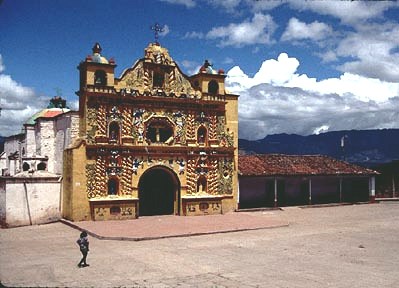
Maya Highland Church Plaza
DESTINATION SLIDE PRESENTATIONS
Guatemala: A Maya Tapestry
While Alison‘s vision of Guatemala reflects its Maya heritage, her images document contemporary lifestyles and villages of these Indians. This immersion in Maya color vividly portrays those preserving religious and civic symbols as they weave Guatemala‘s “threads of identity.”
The vast rainbow of Maya textiles is the link to Guatemala‘s deep-rooted cultural past. Despite a brutal civil war, the largest and strongest concentration of Maya population is now in Guatemala. Alison discusses the history of pre-Columbian and Spanish influences that have both enriched and threatened Maya culture. (This slide show was supplemented by Alison‘s collection of Guatemalan huipiles and other textiles.)
Having photographed in Africa, Europe, Central America, and the U.S, the richness of Alison‘s experiences in Guatemala strongly underlined her conviction that we must share our diverse wisdoms, not erase them. “As varied as world cultures are, many common threads connect us.”
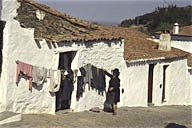
Whitewashed house with laundry, Monsaraz, Portugal
Portugal: A Pastiche of Lisbon and Beyond
Ranging from Portugal‘s sierras to its Atlantic coast, Alison‘s slides of sun-soaked lifestyles and landscapes mingled with images of Lisbon‘s street life. Her photos reflect climbing endless steps and turning even more corners to connect with today‘s descendants of Prince Henry‘s navigators. The pastiche of Portugal Alison created includes fishmongers in Madeira‘s marketplace, gypsies in donkey carts, artists in Moorish gardens – all warm souls and generous spirits.
As Alison described Portugal‘s sea-faring roots, its unique patina glistens on fishing dinghies, colonnaded cloisters and ubiquitous azulejo tiles. Patterns of laundry lines play against a spectroscope of orange, ocher, scarlet, and vermilion stucco walls. Along basalt-cobbled sidewalks and “avenidas,” whimsy is reflected in a silky light and joy resounds in twinkling Portuguese eyes.
DOCUMENTARY SLIDE PRESENTATIONS
HUMAN/NATURE: CHALLENGES OF CO-EXISTENCE
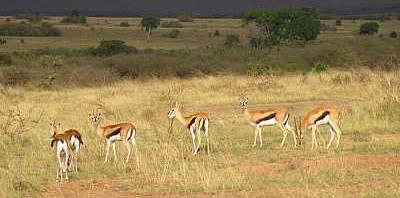
Recurring afternoon thunderstorms keep the grasses green for many species of grazers in the Mara Conservancy.
A frequent visitor to East Africa since 1985, Alison has photographed both beauty and problems in the Maasai Mara, the “jewel in the crown” of Kenya’s game parks. In this presentation Alison’s wildlife and cultural images from the Mara/Serengeti ecosystem set the stage for the human/nature conflicts that have arisen in this Garden of Eden.
She explaind that the Maasai Mara, home of the handsome Maasai and great zebra and wildebeest migrations, has become vulnerable to mismanagement, poaching, overcrowding, crime, corruption and misuse of the land and its resources. A visible struggle for space threatens animals, trees, rivers, and cultures. With the Maasai Mara “sitting on a time bomb,” Alison became involved in creation of a private-sector venture with local Maasai to solve this crisis. The new Mara Conservancy is a model for game reserves worldwide. Its road building, anti-poaching control, strong administration, and sorely needed aid to nearby Maasai communities are dramatically halting the destruction of one of the world’s most precious natural wonders.
Alison has worked with many nonprofits (such as TechnoServe, SEVA, LightHawk, Save the Children, Direct Relief) pursuing human/nature answers to conserving environments while preserving cultures.
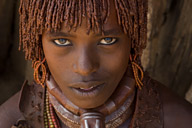
Hamar woman, Ethiopia
East African Women: “Where there is woman, there is magic”
For almost 20 years Alison documented women of East Africa: Maasai, Turkana, and Samburu wives, founders of community enterprises and wildlife experts. In a land where “men live and women survive,” dramatic changes are occurring. Some women are now considered celebrities for using innovative solutions to establish financial stability. Some, still in traditional clothing and lifestyles, are honored as the “culture-keepers.”
Alison knew these women beneath their exotic beauty and their daily struggles. She has witnessed their search for a new form of self-esteem to replace the pressure to bear as many children as possible. Despite tribal, financial and educational differences, African women are concerned for their children and have a deep camaraderie with each other. The surrounding presence of East African wildlife underlines this universal nurturing spirit of all females – human and animal. Alison’s portraits validate the human/nature quality of African women. “Where there is woman, there is magic.”
Migratory Monarchs in Mexico
Annually both Mexicans and monarchs return to Valle de Bravo, the perfect winter retreat. Recent winters have been devastatingly cold. Mexicans bundle up and bear it, but the monarchs die. While this crisis is partly due to changes in weather patterns, the big problem is a rampant spread of illegal logging. In the face of this deforestation, heroes have risen and communities have realized the need to protect the fragile monarchs – regal icons of the many species threatened by “progress.”
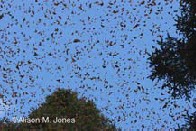
Monarch butterflies in flight
From horseback, on foot, and while hanging out of a low flying, single-engine Cessna, Alison has photographed Mexico’s monarchs in their particular ecosystem, and the illegal logging camps that pose such a threat to their existence. She recently spent several inspiring days in the field learning of the monarchs’ migratory patterns and plight from Dr. Lincoln Brower, the world’s expert on monarchs. She is as anxious as he for an immediate halt to irresponsible and illegal logging.
For further reading, see Alison's Monarch Butterfly Bibliography (PDF, 470KB).
THE SUBJECT OF PHOTOGRAPHY IN SLIDE PRESENTATIONS
Inspirational photographs illustrate the beauty of what is endangered and “tough images” to document environmental degradation and destruction. Emile Zola wrote, “Man cannot be separated from his surroundings.” Sadly, man’s abuse of his surroundings has never been greater. This lecture reviews the historical impact of conservation photography from documenting the 19th century surveys of the US West to early 20th century successful lobbying to establish US National Parks to current 21st century photo essays on the African National Wildlife Refuge. After establishing the importance of imagery, the lecture defines stepping stones to becoming a conservation photographer and ways non-photographers can support and work with conservation photographers to protect our planet.
In this presentation, Alison delved into her photographic raison d’etre and the sense of social responsibility that has evolved from her work with nonprofit development organizations. She believes that photographers who use both an outer and an “inner” light can lead their viewers to action. Her inspiration for documenting the third-world echoes the African proverb “If you think you are too small to make a difference, try sleeping in a closed room with a mosquito.”
Portraying people as connectors, absorbing rhythms of community gathering places, and capturing visible threads of a culture have been Alison’s photographic goals. Alison shares course corrections that helped her create images that can contradict long-held sterotypes and prod the future to change its mind. Visually documenting cultures, Alison has traveled to Africa, Europe, Central America, the Caribbean, and throughout the U.S. Having identified many common threads that connect us to each other, she believes we should share diverse wisdoms, not erase them.
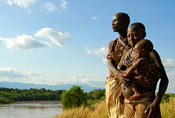
Three generations on the Omo River, Kenya
Travel Photography as Visual Anthropology
This presentation illustrated Alison’s term “Visual Anthropology” and its relevance today. While showing images from many of the world’s cultures, Alison gives the nitty-gritty of trip preparations, itemizes what’s in her camera bag, details the legwork of finding elements that define a culture, and discusses how she approaches her subjects. With humor she shares travel stories and future visions. Quoting mentors from Edward Steichen to Robert Capa, she recommends resources and notes helpful websites. (These details and quotations were repeated in her handouts.) This slide show was of interest to amateur, professional, and even non-photographers. A lifelong traveler, historian and researcher, Alison covered Europe, Africa, Latin America, and the US.
Photojournalism, K-12
With students of all ages, Alison has discussed composition, lighting, and visual story-telling techniques that produce compelling images for yearbooks, newspapers, reports or other uses. Camera orientation, diagonal lines, the rule of thirds, negative space, and perspective are illustrated. Alison uses her photographs, students’ images, and work by other documentary photographers.
Sharing various approaches to documenting people and events, Alison quotes Annie Dillard: “The least you can do is be there.” Alison enjoys infusing students with the joy of photography and stretching their creativity. Having raised four children and taught in classrooms herself, Alison easily adjusts her presentation to match students’ grade levels.
|